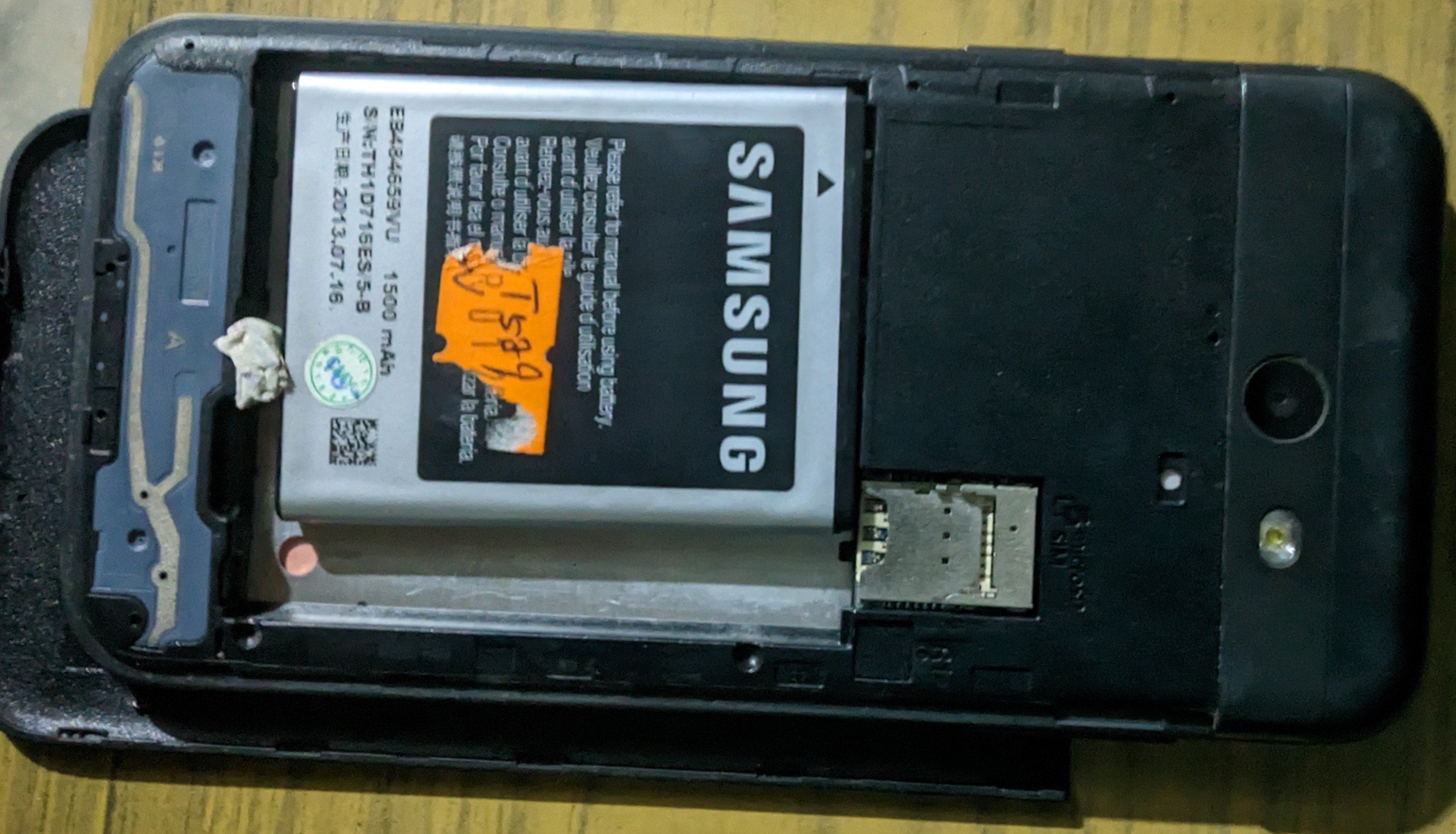Sorry if asking wrong people but I’ve got a samsung galaxy j3 prime, its a really old phone and i lost its charger a year ago, after that until now I was charging it with a different cheap charger, and one day eventually while using the phone the back cover fells of(it has removable back) and then i realised that the battery became swollen, I immediately took the battery out and kept the phone and battery apart for 2 months, now today I lost patience and grabbed a safety pin and did a little hole on both sides of the battery. Now it fits !!! and is much less swollen then before(yes it is still a little swollen)
So I meant to ask would it be safe to use it like that or is there a risk of the battery going kaboom!!! while i am using the phone or charging it ???
EDIT ↓
EDIT - I got rid of the swollen battery and now the mission was to get the smartphone working witty a new battery, so i checked online for new battery for my samsung j3 prime and i found nothing !!! So i decided to take matters in my own hands and searched for some old phone in my dad’s stuff (and i found some really old samsung phone in really good condition) I removed their batteries and checked if they will work with the current j3 prime, the problem was that the battery that i found had 3 golden pins and the phone required a battery with 4 golden pins (idk what to call those pins specifically)
So i just stuck the 3 pin battery in the phone powered it on and voila it works and after that i made the battery stick to the back of the phone by folding a piece of paper on the empty space(the traditional way), after that i attached the back of the phone and now it is working, the only catch is that the battery backup is quite low but i can live with that.
Here the pic of how i made it fix

So i wanted to ask that is it ok to use the new battery? Considering that it has one less golden pin ?
I lost patience and grabbed a safety pin and did a little hole on both sides of the battery
DO. NOT. DO. THAT
OP must be trolling. Surely someone couldn’t be that stupid, right?
If they are smart enough to create an account on Lemmy and find this community, then this is 110% a troll.
I can see the merit in your argument.
Actually it is not a troll, I was serious
Cool. Never touch phone batteries again and throw it away at a safe battery recycling place like a phone repair store.
If you want to know why, you are at a very high risk (almost guaranteed) to be making a short circuit in the battery, causing excessive heat and dangerous leaks depending on the battery type. Very much a high risk low reward setup you do not want to play with.
Trust the above message, stay safe. Do NOT underestimate the danger of such a manipulation.
Edit: there is a real danger of explosion.
I don’t think you’re stressing the danger of battery fires enough. They self ignite and spew flames all over the place
Read the edited post please 🙃
No, it’s not safe at all. You should be disposing of that battery immediately.
No longer a battery, it is now a fire bomb waiting to go off.
Its been said already but Im going to emphasize, NO. You are already lucky your pinhole fix didn’t make it explode! Holy shit!
spicy pillows kill.
If you have to ask, the answer is no it is not safe.
No. It is not safe.
Replace the battery and dispose the old one or dispose of the device properly.
Look it up but there’s probably a Best Buy somewhere nearby that’ll let you dispose of it for free not too far from you.
Never poke a battery again, you’re lucky it didn’t burst into flames and you very well could have exposed yourself to some bad stuff.
is there a risk of the battery going kaboom!!!
Is it really a risk if it’s a guarantee?
If you smell a chemical smell while that’s in your pocket you better drop your fucking pants and run, if you even get that much warning.
I intentionally made a swollen battery go off and that was fireworks level violent and it had a jet of pink flame that went on for quite a while.
No no no no. Dump it in some salt water and kill it dead.
If you can put the old battery in it, you can put a new battery in it. It is absolutely not worth risking a fire for the sake of a few quid. Those batteries are very dangerous when damaged.
Do not leave it unattended until you locate a bucket and some salt to safely kill it. Do not put it in normal trash until and unless fully killed.
Alright, I m gonna dig a really deep hole and dump it inside it
Please tell me you are joking.
I’ve created a diamond pickaxe for it 😂
DANGER. DROP AND RUN.
Did you ever think about looking up information on how to handle batteries online before doing something like punching holes in your battery?!?!?
I searched on youtube “how to repair swollen batteries” and they did the same in the videos, but I ignored the warning “do not try this at home”
I’m just here for the obituary
This can’t be real. This has to be a troll. OP should be dead otherwise.
If what everyone else said hasn’t already put the wind up you, this portion of an article below details why lithium fires are so freaking bad.
Once lithium battery fires take hold, they are notoriously difficult to put out, especially if you don’t know what you’re doing. There have been several reports of fire departments being unable to extinguish burning EV batteries, which—amongst other things—led to Tesla issuing specific guidance to firefighters as to how to deal with such fires. There are several reasons for the severity of lithium battery fires. For a start, they burn extremely hot, and have a nasty habit of spontaneously reigniting when you think you’ve extinguished them. They also burn for a long time. If there’s any elemental lithium present, it will react with moisture in the air to produce lithium hydroxide and hydrogen gas. Hydrogen gas is flammable. Very flammable. Lithium-ion batteries contain little or no elemental lithium, but any that is present—it can form on the anode during the charging process—can present a very unwelcome surprise. The nature of the electrolyte used can also be a problem—some high-specific energy lithium-ion batteries use a flammable electrolyte that contains lithium hexafluorophosphate, which can decompose into the thoroughly unpleasant hydrofluoric acid during a fire. Lithium ion fires also produce a variety of other gases, including oxygen, which means that simply smothering the fire doesn’t work, because the fire essentially generates its own fuel. Several of these gases are flammable, and can ignite explosively, while oxygen, not flammable itself, causes other materials in the battery to burn much hotter and more rapidly. Both carbon monoxide and carbon dioxide are also produced, which can present breathing hazards to firefighters. Generally, the best thing to do with a lithium fire is to stay a long way away from it and let it burn itself out. Of course, if it happens to be, say, the car or e-bike in your garage that’s on fire, this approach may prove unsatisfactory.
Or, say you put a fucked up battery into your phone, then your phone into your pocket… Well, you might be golden if you also decided to start carrying lithium ion gel with you everywhere you go, but barring that, you’ll make a pretty charred shish kabob in short order.
You’re not even supposed to charge your phone near combustibles like sheets and clothings, ideally, or overcharge your batteries (to avoid overheating).
Thanks, I’ve learned my lesson and now I will safely dump it…
🍿






